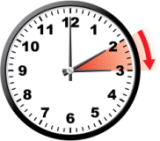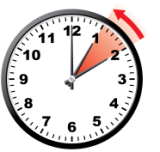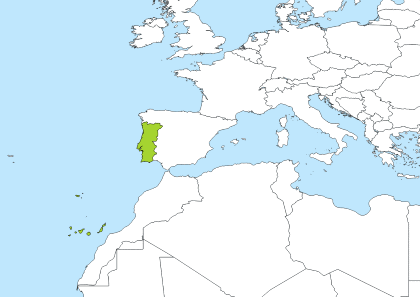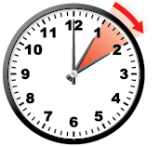Bend, OR, USA to CT to WEST
Time Difference
PDT (Pacific Daylight Time) is 2 hours behind Central Daylight Time and 8 hours behind Western European Summer Time
12:30 pm12:30 in Bend, OR, USA is 2:30 pm14:30 in CDT and is 8:30 pm20:30 in WEST
Bend to CT call time
Best time for a conference call or a meeting is between 8am-5pm in Bend which corresponds to 9am-6pm in CT
Bend to WEST call time
Best time for a conference call or a meeting is between 8am-10am in Bend which corresponds to 4pm-6pm in WEST
12:30 pm12:30 PDT (Pacific Daylight Time) (Bend, OR, USA). Offset UTC -7:00 hours
2:30 pm14:30 Central Daylight Time (CDT). Offset UTC -5:00 hours
8:30 pm20:30 Western European Summer Time (WEST). Offset UTC +1:00 hour
12:30 pm12:30 Bend, OR, USA / 2:30 pm14:30 CDT / 8:30 pm20:30 WEST
| Bend, OR, USA | CT | WEST |
|---|---|---|
| 12am (midnight) | 2am | 8am |
| 1am | 3am | 9am |
| 2am | 4am | 10am |
| 3am | 5am | 11am |
| 4am | 6am | 12pm (noon) |
| 5am | 7am | 1pm |
| 6am | 8am | 2pm |
| 7am | 9am | 3pm |
| 8am | 10am | 4pm |
| 9am | 11am | 5pm |
| 10am | 12pm (noon) | 6pm |
| 11am | 1pm | 7pm |
| 12pm (noon) | 2pm | 8pm |
| 1pm | 3pm | 9pm |
| 2pm | 4pm | 10pm |
| 3pm | 5pm | 11pm |
| 4pm | 6pm | 12am (midnight) |
| 5pm | 7pm | 1am |
| 6pm | 8pm | 2am |
| 7pm | 9pm | 3am |
| 8pm | 10pm | 4am |
| 9pm | 11pm | 5am |
| 10pm | 12am (midnight) | 6am |
| 11pm | 1am | 7am |
| 0:00 | 2:00 | 8:00 |
| 1:00 | 3:00 | 9:00 |
| 2:00 | 4:00 | 10:00 |
| 3:00 | 5:00 | 11:00 |
| 4:00 | 6:00 | 12:00 |
| 5:00 | 7:00 | 13:00 |
| 6:00 | 8:00 | 14:00 |
| 7:00 | 9:00 | 15:00 |
| 8:00 | 10:00 | 16:00 |
| 9:00 | 11:00 | 17:00 |
| 10:00 | 12:00 | 18:00 |
| 11:00 | 13:00 | 19:00 |
| 12:00 | 14:00 | 20:00 |
| 13:00 | 15:00 | 21:00 |
| 14:00 | 16:00 | 22:00 |
| 15:00 | 17:00 | 23:00 |
| 16:00 | 18:00 | 0:00 |
| 17:00 | 19:00 | 1:00 |
| 18:00 | 20:00 | 2:00 |
| 19:00 | 21:00 | 3:00 |
| 20:00 | 22:00 | 4:00 |
| 21:00 | 23:00 | 5:00 |
| 22:00 | 0:00 | 6:00 |
| 23:00 | 1:00 | 7:00 |
Bend Information
Time Zone
HNP - Heure Normale du Pacifique
-8:00 hours during Heure Normale du Pacifique.
 Sunday, March 9, 2025 at 2:00 am local time. DST starts annually the on second Sunday of March. Clocks are turned forward 1 hour to Sunday, March 9, 2025, 3:00 am local daylight time instead. Also called Spring Forward or Summer Time.
Sunday, March 9, 2025 at 2:00 am local time. DST starts annually the on second Sunday of March. Clocks are turned forward 1 hour to Sunday, March 9, 2025, 3:00 am local daylight time instead. Also called Spring Forward or Summer Time.
 Sunday, November 2, 2025 at 2:00 am local time. DST ends annually the on first Sunday of November. Clocks are turned backward 1 hour to Sunday, November 2, 2025, 1:00 am local standard time instead. Also called Fall Back or switch to Winter Time.
Sunday, November 2, 2025 at 2:00 am local time. DST ends annually the on first Sunday of November. Clocks are turned backward 1 hour to Sunday, November 2, 2025, 1:00 am local standard time instead. Also called Fall Back or switch to Winter Time.
Bend Facts
Central Time
Central Time (PT) is a general term used to describe the areas that observe either the Central Standard Time (CST) or Central Daylight Time (CDT) in the United States and Canada. CT is not static but switches between CDT and CST.
Territories observing the time zone are primarily in North and Central America. It runs through several Mexican and U.S. states, as well as several Canadian provinces and Central American countries.
Countries: It is used in following countries: Belize, Canada, Costa Rica, Guatemala, Honduras, Mexico, Nicaragua, El Salvador, United States.
Principal Cities: The largest city in the CST timezone is Mexico City from Mexico with population about 12.294 million people. Other major cities in the area are Chicago, Houston, Iztapalapa, Ecatepec.
French: HNC - Heure Normale du Centre
Spanish: CT - Tiempo Central Estándar, CT - Zona Centro
Central Time (PT) is a general term used to describe the areas that observe either the Central Standard Time (CST) or Central Daylight Time (CDT) in the United States and Canada. CT is not static but switches between CDT and CST.
Territories observing the time zone are primarily in North and Central America. It runs through several Mexican and U.S. states, as well as several Canadian provinces and Central American countries.
Countries: It is used in following countries: Belize, Canada, Costa Rica, Guatemala, Honduras, Mexico, Nicaragua, El Salvador, United States.
Principal Cities: The largest city in the CST timezone is Mexico City from Mexico with population about 12.294 million people. Other major cities in the area are Chicago, Houston, Iztapalapa, Ecatepec.
French: HNC - Heure Normale du Centre
Spanish: CT - Tiempo Central Estándar, CT - Zona Centro
CT representations, usage and related time zones
- -06 - basic short
- -0600 - basic
- -06:00 - extended
- -0600 - sign character (-) followed by a four digit time providing hours (06) and minutes (00) of the offset. Indicates six hour and zero minutes time differences to the west of the zero meridian.
- Sierra - Military abbreviation for CT
- S - short form of 'Sierra'
- Central Time - UTC -6
- Chuuk Time - UTC +10
- CST - Central Standard Time
- CT - Central Time
- MDT - Mountain Daylight Time
- EAST - Easter Island Standard Time
- GALT - Galapagos Time
- S - Sierra Time Zone
Western European Summer Time
Offset: WEST is 1 hour ahead Greenwich Mean Time (GMT) and is used in Europe
Countries: It is used in following countries: Spain, Faroe Islands, Portugal
Principal Cities: The largest city in the WEST timezone is Lisbon from Portugal with population about 517,802 people. Other major cities in the area are Las Palmas de Gran Canaria, Porto, Santa Cruz de Tenerife, Amadora
German: WESZ - Westeuropäische Sommerzeit

Daylight Saving: Western European Summer Time (WEST) is a daylight saving/summer time zone, however during winter some places adjust time for one hour back and observe Western European Time (WET).
 End: Western European Summer Time (WEST) has ended on Sunday, October 26, 2025 at 2:00 am local time and clocks were set one hour back to Sunday, October 26, 2025, 1:00 am local standard time instead. Daylight saving ends annually the on last Sunday of October
End: Western European Summer Time (WEST) has ended on Sunday, October 26, 2025 at 2:00 am local time and clocks were set one hour back to Sunday, October 26, 2025, 1:00 am local standard time instead. Daylight saving ends annually the on last Sunday of October
 Start: Western European Summer Time (WEST) starts on Sunday, March 29, 2026 at 1:00 am local time and clocks are set one hour forward to Sunday, March 29, 2026, 2:00 am. Daylight saving starts annually the on last Sunday of March
Start: Western European Summer Time (WEST) starts on Sunday, March 29, 2026 at 1:00 am local time and clocks are set one hour forward to Sunday, March 29, 2026, 2:00 am. Daylight saving starts annually the on last Sunday of March
WEST representations, usage and related time zones
- +01 - basic short
- +0100 - basic
- +01:00 - extended
- +0100 - sign character (+) followed by a four digit time providing hours (01) and minutes (00) of the offset. Indicates one hour and zero minutes time differences to the east of the zero meridian.
- Alpha - Military abbreviation for WEST
- A - short form of 'Alpha'
- Atlantic/Canary
- Atlantic/Faeroe
- Atlantic/Faroe
- Atlantic/Madeira
- Europe/Lisbon
- Portugal
- WET
- BST - British Summer Time
- CET - Central European Time
- IST - Irish Standard Time
- WEST - Western European Summer Time
- A - Alpha Time Zone
- CET - Central European Time
- MEZ - Mitteleuropäische Zeit
- WAT - West Africa Time
- WST - Western Sahara Summer Time
- BMT - Biel Mean Time
